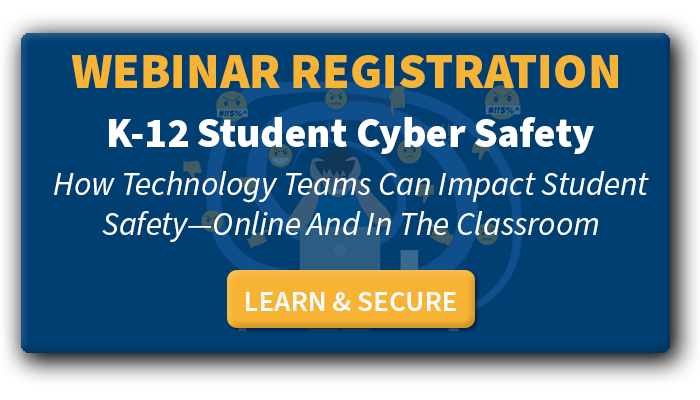How K-12 IT Teams Are Becoming the New Line of Defense in Cyberbullying
The statistics surrounding cyberbullying continue to be worrisome. A recent study by Pew Research discovered that about 60% of teens have been the victims of cyberbullying. But, even more disturbing is that the majority of students think that teachers, social media sites, and elected officials are doing a poor job of cyberbullying monitoring to help control the problem.
Why Districts Must Take Responsibility for Cyberbullying Monitoring
Cyberbullying and other types of toxic online behavior aren’t limited to social media and gaming platforms. Students are also using apps provided by schools to communicate with each other. IT admins are often finding disturbing content in unexpected places, including Google Drive, Docs, Chat, and Gmail.
The fact that students aren’t on school property when cyberbullying happens doesn’t resolve districts of responsibility for addressing the issue. Districts are still responsible for cyber safety in schools whether the students are sitting in a classroom or attending class online.
With online learning the norm in many districts, experts worry that instances of cyberbullying will continue to increase, but the number of students reporting the problem will decrease. They’re predicting this decrease based on a lack of face time with teachers and counselors, another issue raised by the need for remote learning.
It’s up to K-12 IT teams to act as the first line of defense in cyberbullying monitoring in the schools, regardless of where learning is taking place. Greg Hogan, Network Data & Security Coordinator at Bibb County School District in Georgia, explains an IT team’s responsibility this way:
“You can’t put a price on the safety of your data and you can’t put a price on the safety of your students. We are responsible for the tools that students have. We give them laptops, internet, email, and cloud storage—and if we don’t do that responsibly, we are not doing our jobs well.”
IT’s Role in K-12 Cyberbullying Monitoring
IT teams have been taking on an ever-broadening role in K-12 cyber safety, even before remote learning dominated the spring of 2020 and the 2021 school year. For most teams, the role of IT isn’t just about fixing Chromebooks and maintaining building networks and servers. IT teams are also an integral part of K-12 cyber safety protocols, including:
- Self-harm monitoring
- Student suicide prevention
- Understanding how cybersecurity and cyberbullying are related in K-12
What Type of Online Behavior Should IT Teams Look For?
There are many helpful resources to guide teachers and parents when it comes to identifying potential cyberbullying behaviors and victims. But, what types of things should IT admins identify when monitoring school apps?
For IT admins, cyberbullying detection should include monitoring for toxic content anywhere in shared drives, including text and image files, emails, and chat apps. They should flag that content and send it to the proper person in their school’s hierarchy, which could include counselors, teachers, and/or principals. Toxic content can include:
- Insults and explicit language
- Obscene and sexually explicit language and images
- Discriminatory attacks such as text or images targeting persons with disabilities, specific racial or ethnic backgrounds, sexual orientation, etc.
- Threats of violence against others or encouraging violence against others, including a specific person
- Text and images suggesting self-harm or thoughts of suicide
It’s not necessary for IT teams to resolve the issues they identify; that’s the responsibility of the counselors and others in the district who have been trained to address bullying issues with the students. However, the counselors don’t have a window into the systems to identify the problems. Working together, IT teams and counselors can help to resolve instances of cyberbullying in a way they could never accomplish alone.
The good news is that you’re not fighting this battle alone. As part of ManagedMethods’ K-12 Cybersecurity & Safety Leadership Series, we invited a panel of K-12 IT leaders to participate in a panel discussion entitled, Cybersecurity & Safety Resolutions for 2021 & Beyond. In this free on-demand panel discussion, you’ll watch your peers as they talk about the risks they’ve seen in 2020, and how they plan to move forward based on the lessons learned.
Take a few minutes today to expand your understanding of the cybersecurity issues in schools and get ideas for planning your district’s strategies in the months to come.

![[FREE WEBINAR] Student Cyber Safety in Schools. REGISTER HERE >>](https://no-cache.hubspot.com/cta/default/6834707/5cd0a157-352c-458b-9676-0ad9bb75645a.png)
